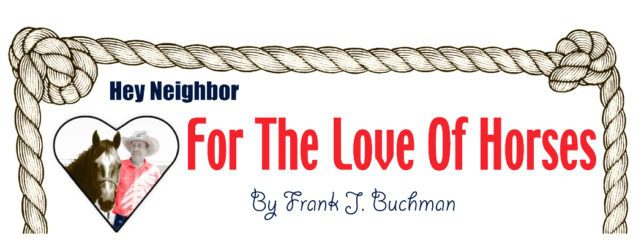(First Of A Two-Part Series)
Despite concern about the overall economy, participation in major horse competitions remains strong.
But, could the decline in horse inventory soon create a shortage of quality entries for the expanded interest in most events?
HORSE REGISTRATIONS DOWN
Certainly, if recent registration trends of the American Quarter Horse Association (AQHA), the American Paint Horse Association (APHA) and other breeds with lower numbers continue for an extended time, there will be fewer horses from which to select prospects.
With the largest numbers of all breeds, AQHA registrations peaked at 165,114 in 2006, according to Kathie Luedke, director of administration for the American Horse Council in Washington, D.C. Numbers were near an eight-year low in 2007, and up just slightly in 2008 with 135,927 registrations.
As the second largest breed association, APHA registrations in 2007 were near a decade low at 35,032. Peak year for recording Paints was 2000 with 62,511.
Third major breed association is Thoroughbred with registrations relatively stable for the decade in the 36,000 range, to a high of 41,086 in 2006. The count has been down the last three years, with sharply lower numbers predicted for 2010.
For the past 10 years, 15 other horse breeds have generally had yearly declining registrations. This is in contrast to the stable and sometimes expanding entries in breed shows.
SHOW ENTRIES STRONG
Charlie Hemphill, director of shows for the AQHA, explained, “On the average, entries in the larger shows this year have been up, and the smaller shows have been stable. Exhibitors still want to participate in shows, but with the economic situation, they prefer to do it in a shorter span.”
National Reining Horse Association (NRHA) shows have increased 84 percent in the past decade in this country, and 147 percent nationwide, tallied Dan Wall, NRHA executive director, Oklahoma City.
Diane Eppers, executive director of the National Snaffle Bit Association (NSBA), Gurnee, Ill., echoed those statistics, also calculating that show approvals are up this year. “Participation in the three top events has been higher,” Eppers noted. “New events and expanded programs have expanded participation in NSBA events.”
At the National Cutting Horse Association (NCHA), Fort Worth, Dave Brian, director of shows, indicated, “We are down a few shows, but there are still over 2,200 approved shows. We’re only averaging six fewer entries per show. I think that’s pretty positive.”
Although Paint Horse show entries have been down some, Jerry Circelli, APHA director of marketing, Fort Worth, expressed optimism for expanding horse ownership.
“Our youth membership numbers are up which points to increased participation in years to come,” Circelli predicted. “Education has been our major focus. Many people really don’t have any idea what it is to be around a horse, and just exposing them to a horse often makes them want one.”
The 11th annual Reichert Celebration, the nation’s top All Breed Western Pleasure Futurity in Tulsa, Okla., drew a record 1,975 horses, up 20 percent from the previous year, according to Terry Schroeder, president of the event.
WHY ARE BREEDINGS DOWN?
Considering horse event participation, why have breedings and registrations declined?
“There is a surplus of young, average quality and untrained horses, and the numbers have continued to increase,” declared Cleone Uecker, president of the South Dakota Horse Company, which markets 7,000 horses annually at Corsica, S.D.
“Numbers of this type of horses have expanded because people have kept breeding their mares despite not having a plan of what to do with them,” Uecker verified. “Quality young horses with top pedigrees and color still sell reasonably well, but frequently that is not what is being offered.”
Well-broke horses often sell at a major premium, Uecker critiqued. “Yet, the number and percentage of these is limited. Sufficient trainers aren’t available to handle the horses that are produced and get them suitable for most riders.”
At Triangle Sales Company, which conducts six stock horse sales annually totaling about 3,000 head in Shawnee, Okla., Bret Stossel, staff member for 14 years, reverberated, “There is a decrease in quality riding horses. There are never enough.
“The market for young horses with performance pedigrees is down 50 to 70 percent in the past five years,” Stossel evaluated. “Fewer horses are being consigned, because people can’t afford to pay the fee to sell a horse for a price that often won’t pay their initial ownership cost.”
“It’s a cycle,” responded Col. Tim Jennings, who conducts the AQHA World Championship Show Sale in Oklahoma City, with his brother Mike, through their Professional Auction Services, Inc., Berryville, Va.
“This is a natural cycle of pure economic supply and demand,” Jennings defended. “It’s the third one we’ve seen since we started this business in 1978.” The firm manages 17 sales totaling over 3,000 horses annually.
Jennings reiterated: “The economy is the factor. When prices are up, registrations follow, and when the market drops, so does demand for breeding. Prices have held strong for the elite show horses, but the middle and lower end horses have been most affected by the recession.”
A yearling sale in conjunction with the Reichert competition had higher averages than a year ago. “We did limit consignments this year, but the 188 horses in the catalog sold very strong with a sale top of $75,000 on a mare. There is a high demand for show prospects,” Schroeder noted.
“People are paying a high price for what they want, but not buying a second lower priced horse, or even two more horses to speculate or play with, like they used to do,” clarified Jennings.
THERE IS OPTIMISM
Continued Next Week
